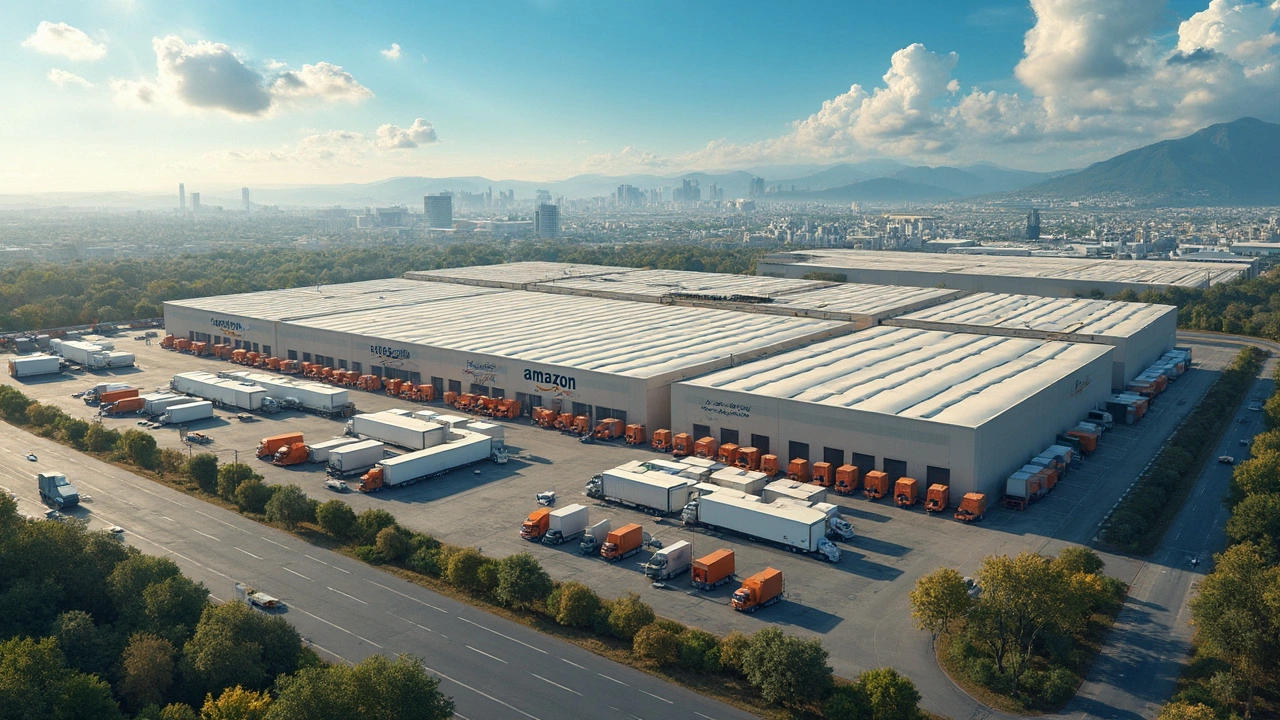Amazon Warehouses: Inside the Hubs That Speed Up Your Shipping
Ever wondered why your Amazon order shows up in a day or two? The secret is the network of Amazon warehouses, also called fulfillment centers. These places are where products arrive, get stored, and are packed for delivery. Knowing how they work can help you shop smarter and help sellers plan better.
What Happens Inside an Amazon Warehouse?
First, items are shipped from manufacturers to the warehouse. Trucks unload pallets, and scanners tag each box with a barcode. The system then decides where to put each product on the shelves. Shelves are organized by size, weight, and how fast the item sells. "Fast‑moving" items sit near the packing stations, so workers can grab them quickly.
When a customer places an order, the warehouse software matches the order to the exact location of the product. A worker, or sometimes a robot, walks (or rolls) to the spot, picks the item, and drops it onto a conveyor belt. The belt moves the item to a packing station where it’s boxed, labeled, and scanned again. That double‑scan makes sure the right product gets to the right address.
After packing, the package enters the shipping area. Here, carriers like UPS, DHL, or Amazon’s own delivery network pick up the parcels. The system prints a barcode that tells the carrier where to drop the package next. From there, it joins the last‑mile delivery chain that brings it to your doorstep.
Why Sellers Should Care About Amazon Warehouses
If you sell on Amazon, understanding the warehouse flow can save you money and improve customer ratings. For example, using Amazon’s "FBA" (Fulfilled by Amazon) service means you send your stock to these warehouses, and Amazon handles packing and shipping. That reduces your workload and lets you use Amazon’s fast delivery promises.
But there are rules. You need to label each product correctly, follow packaging guidelines, and keep inventory levels balanced. Too much stock can lead to storage fees, while too little can cause stock‑outs and lost sales. Monitoring the "in‑bound" and "out‑bound" reports in your seller dashboard helps you stay on track.
Another tip: pay attention to the “prime‑eligible” tag. Items stored in a warehouse close to a major city often qualify for Prime two‑day shipping, which boosts visibility. If you ship from a distant warehouse, delivery may take longer, and the product might rank lower in search results.
Finally, keep an eye on seasonal peaks. During holidays, Amazon ramps up staff and adds temporary storage space. Sending inventory early can prevent delays, while waiting until the last minute might mean higher fees or slow fulfillment.
In short, Amazon warehouses are the engine that fuels fast shipping. Knowing the steps—from receiving pallets to the final hand‑off—helps both shoppers and sellers get the most out of the system. Whether you’re buying a new gadget or running an online store, the warehouse process is what turns a click into a package on your door.
May 23, 2025
Evelyn Wescott
0 Comments
Ever wondered who actually builds those massive Amazon warehouses that seem to pop up everywhere in the USA? This article digs into the companies behind the scenes, the main steps in the building process, and what sets Amazon's construction projects apart. We'll look at the big-name contractors, how they layout these huge spaces, and why speed and efficiency matter so much to Amazon. Tips on how Amazon picks its building teams and handles strict deadlines are included. Get ready for a clear, practical look at a world that rarely makes the headlines.
February 6, 2025
Evelyn Wescott
0 Comments
Amazon's rapid expansion has led to an immense network of warehouses across the United States. By exploring which state hosts the most fulfillment centers, we gain insights into logistics strategies and regional benefits. This article delves into the distribution patterns, factors influencing location choices, and the impact on local economies. Readers will discover where Amazon's operations are most concentrated and what this means for future warehousing trends.





